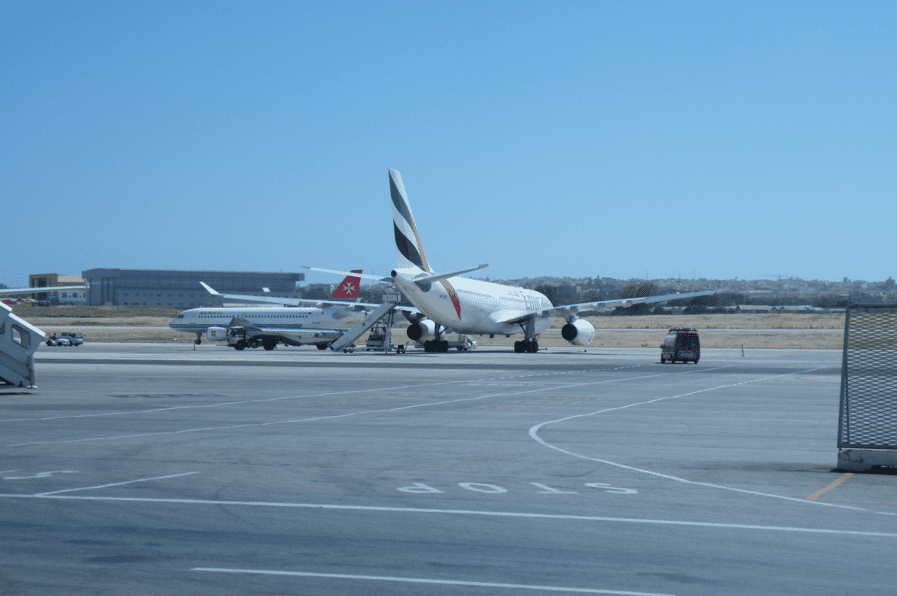Navy
Polish Navy Acquires Tankers. Instead of Combat Vessels?
The Armament Inspectorate published a notice about initiation of a tender, the goal of which is to build a “SUPPLY fuel tanker”. There is an option that two such vessels could be procured. In this way, the Polish Navy risks a situation in which, by realizing several ship programmes in parallel, some of them may be left aside, due to insufficient funds.
The issue is doubtful, since even before the combat vessels are created, the Polish Navy is willing to be in possession of a ship which could be used to deliver supplies to those vessels.
It was assumed that SUPPLY class vessel is going to be in possession of the following capabilities:
- “provision of fuel with the use of side and wake methods, out in the sea;
- provision and reception of fuel from ships in the harbours;
- storing and supplying other vessels with combat, technical and other material inventory;
- provision of technical support within the scope of carrying out repairs of the military vessel equipment;
- capability of refuelling the helicopters;
- capability of delivering the supplies with the use of the VETREP (vertical replenishment) method;
- carrying out own repairs and works and works to meet the needs of other vessels;
- storing and supplying the drinking water;
- storing and supplying food;
What was the starting point for procurement of the new vessels for the Polish Navy?
The Armament Inspectorate wants to, according to the announcement published on 5th April this year, acquire a single SUPPLY fuel tanker. The vessel is to be constructed within the period between 2017 and 2020. Meanwhile, it was stated that second vessel of this class would be acquired within the period between 2020 and 2024. The optional procurement would not be initiated after a contract is concluded, but after “a written notice is submitted by the Ordering Party, in line with a provision contained in the Terms of Reference”.
The issue is treated as a quite urgent matter, which also makes some doubts arise. This is due to the fact that not only price (with a weight of 60%) and guarantee period (weight of 20%) are taken into account in the tender, but a significant emphasis (weight of 20%) has been placed on the delivery term. In the initial versions of the Navy technological modernization plan, coming from March 2012, it was planned that only a single tanker would be introduced into service, within the period between 2022 and 2026. Moreover, it was also noted that there is a need to acquire a single operational support vessel by 2022. These intentions are, in the light of the above, significantly changed.
The list of the potential contractors will be known on 9th May 2016, it is the deadline set for acceptance of the requests for being included in the tendering procedure. The technological dialogues pertaining to the potential acquisition of the fuel tanker involved the following entities: Navantia shipyard from Spain, Hyundai Heavy Industries shipyard from South Korea, Turkish AYCOM/STM company, French DCNS consortium, Nauta shipyard from Gdynia, Gdansk-based Remontowa Shipbuilding, consortium consisting of the Naval Shipyard S.A. company from Gdynia, working together with the Gdynia based Enamor, and Warsaw-based KenBIT companies. However, this list may become even longer.
Defence Budget Bubble
In this situation, there is one thing that remains certain – no additional funds were allocated to the “Naval threats neutralization” programme. Moreover, the funds may be even limited, since in the most of the armament modernization programmes underestimations could be spotted – seen e.g. in the initial estimates related to the cost of acquisition of the Patriot missile system (200% of the amount initially planned to be used to cover the whole Polish air defence system).
Thus, we should be very careful, when new tasks are added to the existing plans. The aforementioned tasks were supposedly balanced and they are well founded within the future budgets. Meanwhile, the tanker shows that the Polish Navy follows a peculiar policy: “let’s plan whatever we can, and buy whatever we’d be able to buy”. It seems that in a situation when sufficient funds could not be available, the most critical procurement should be realized first. In case of the Polish Navy – combat ships should be the priority.
It should also be taken into account that, when it comes to the Miecznik-class [Swordfish] coastal defence vessels, and Czapla [Heron] patrol minehunters, the Polish Navy is no longer willing to acquire planned and balanced solutions, the needs have been significantly expanded. The Armament Inspectorate received a request, asking for clarification, sent by Defence24.pl: “Has the funding of the Miecznik and Czapla programmes been increased, after a decision was made that Czapla will not be a cheap patrol vessel, as it was transformed into a more expensive, unarmed corvette, or has it been established that the funds that were estimated to cover these programmes back in 2013 have been insufficient?
We received a reply, that “funds that are covering the Miecznik and Czapla programmes were defined within the framework of the analyses carried out during the analytical and conceptual phase.Potential needs verification will take place once we receive the offers from the contractors which are going to be analysed within the scope of the required changes related to the funding which is to be used to perform the works related to those programmes”
In case of so expansive plans made by the Navy, and in the light of acceleration of the KORMORAN programme (introduction of the remaining two minehunters between 2018 and 2019) and in the circumstances, in which focus is placed on acquisition of the second Coastal Missile Squadron, verification of needs may turn out to be quite painful. We should also recall the fact that technological dialogues carried out at the end of 2014 pertained not to a single, but to two support vessels: a tanker, and a Bałtyk-class logistics support vessel. The latter ship, similarly as the one placed within the framework of the SUPPLY programme, was to be used to logistically secure operations of the Polish frigates and corvettes.
The ship in question though was to be twice as large as the SUPPLY-class vessel (displacement of ca. 10,000 tonnes). Its fuel capacity was to be doubled (at least 3000/6000 tonnes, instead of 1500 tonnes), same applied to fresh water carried by the vessel (500/1000 tonnes, compared to 200 tonnes required now). Initially, it was the BAŁTYK class ship, that was to be treated with utmost priority. In the middle of 2015, Col. Adam Duda (now working with a rank of General), the new chief of the Armament Inspectorate announced that the modernization programme assumes that a single vessel of this class is going to be procured by 2021. The procedures were to be started in the third quarter of 2016, while the agreement was expected to be concluded in 2017.
General Duda noted at the time that the procurement procedures pertaining a fuel tanker were to begin in the third quarter of 2015, while the agreement was to be concluded in the second quarter of 2016. This means that the programme in question is delayed by one year now.


